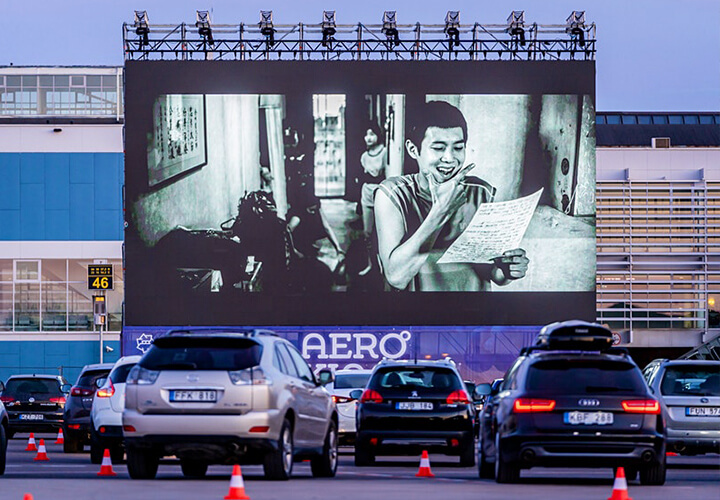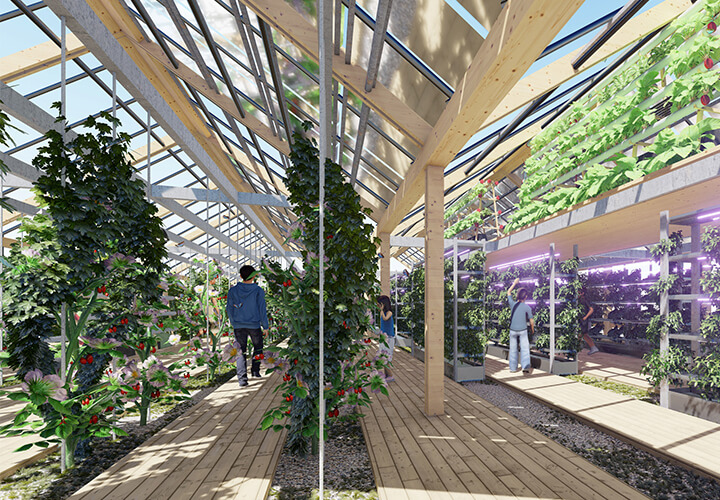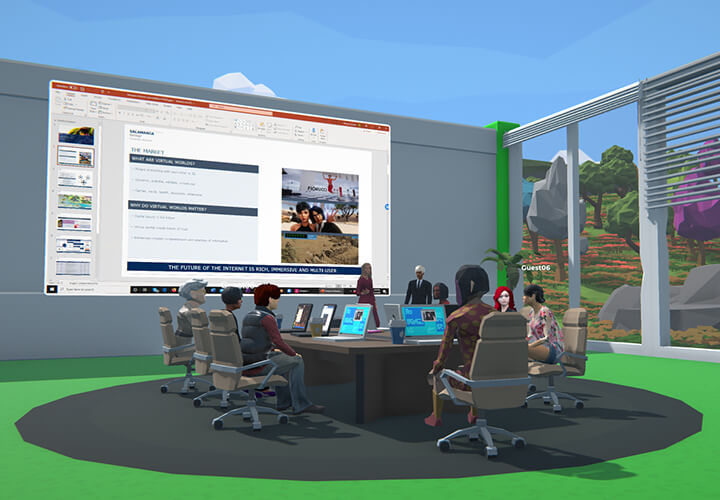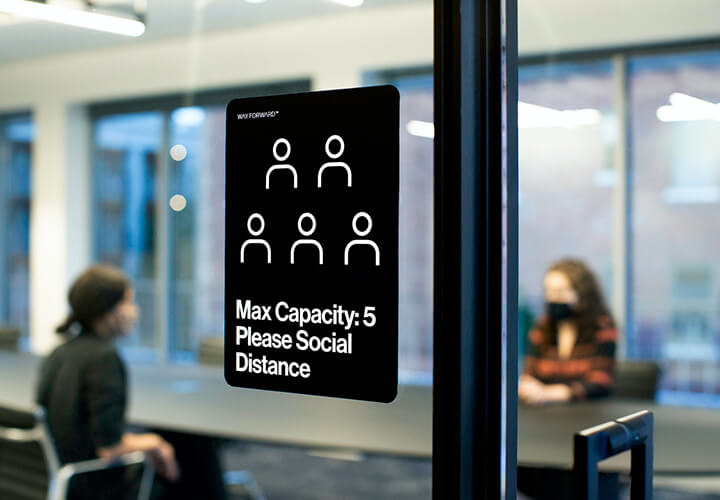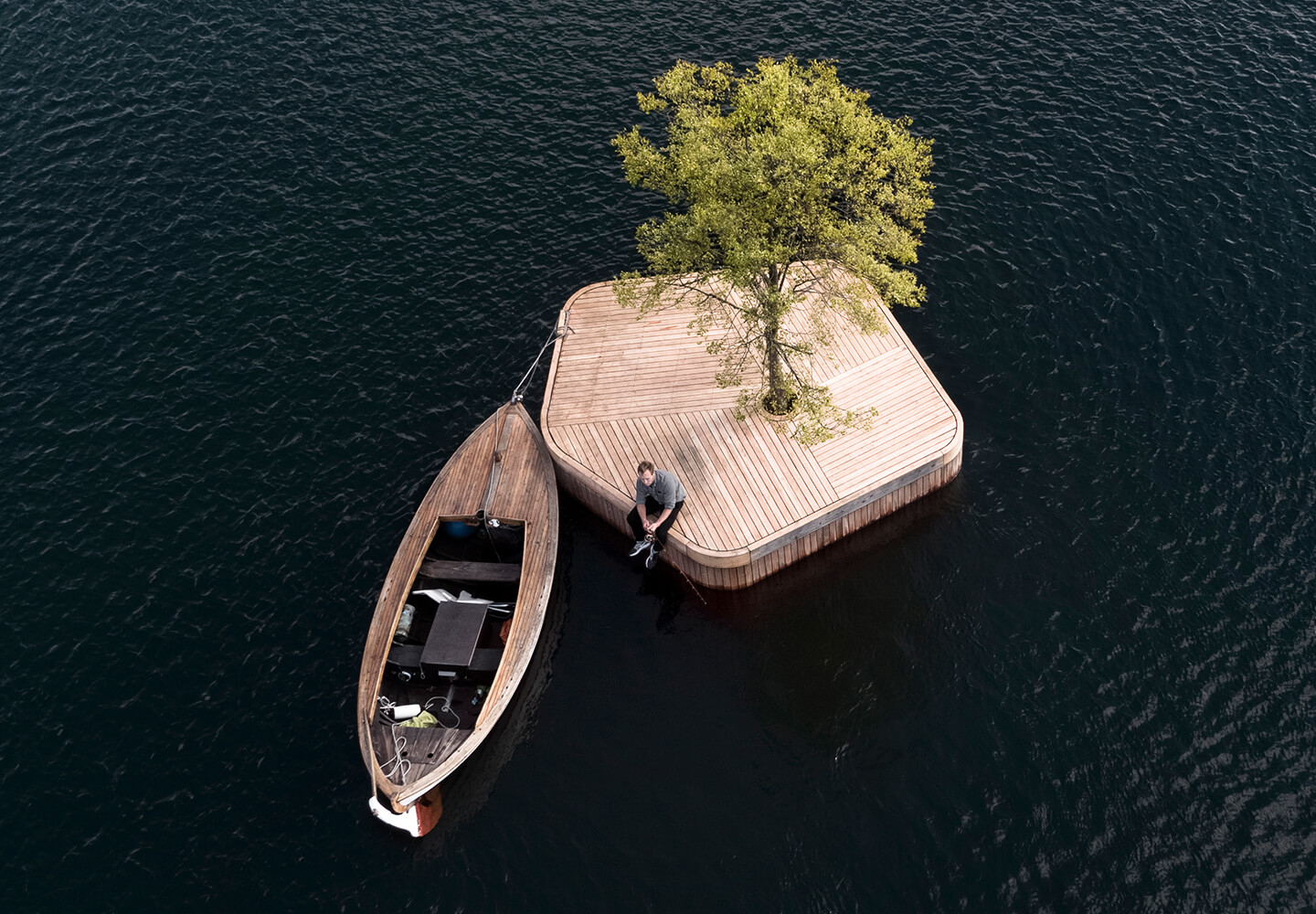Here are 4 fascinating design concepts that hint of the future of built environments in 2021 and beyond.
We always keep an eye out for “The Future 100” report, which features 100 predictions from Wunderman Thompson Intelligence. This year’s report covers everything from culture and technology to brands and marketing, and it’s worth diving into. Amidst the trends, the following destinations and concepts jumped out at us because they relate specifically to our clients and the work we do as experiential graphic designers.
Copenhagen Islands
We love this idea for a cluster of artificial islands designed by Maritime Architecture Studio – a collaboration between Australian architect Marshall Blecher and Danish firm Studio Fokstrot. The project is called Copenhagen Islands, and it’s bringing “wildness and whimsy” to the city’s harbour.
It’s especially timely in the COVID era as people continue to flock to public spaces. It’s also especially relevant in Australia, where there is so much potential to “activate” our harbour so it can be enjoyed by everyone.
The first Copenhagen island, KBH-Ø1 (pictured above), launched in 2018 with more islands to be built soon. Each one is flexible and raises awareness of climate change and increased water levels. It’s easy to imagine a “parkapeligo” of tiny islands in Sydney Harbour, and we are looking forward to seeing lots more innovation and investment in outdoor public spaces this year.
Aerocinema, Vilnius International Airport
The Future 100 Report also highlights the rise of “flexperiences”, where innovative companies are repurposing empty venues and assets to create hybrid and adaptable experiences.
A wonderful example is the Aerocinema at Vilnius International Airport. The airport converted its runway into a drive-in movie cinema last May as part of the Vilnius International Film Festival. It usually welcomes over 5 million passengers per year and is the second busiest airport in the Baltics. So, it’s amazing to see how quickly it repurposed its runway to welcome 13,500 people in their cars.
Agility and collaboration have never been more important. In 2021, we believe experiential graphic designers will play an important role in helping existing venues to champion adaptive spaces and hybrid experiences.
WeTransfer’s virtual office
We don’t think the COVID pandemic spells the end of large offices entirely, but it’s worth noting the rise of the “virtual-first” workplace.
WeTransfer is an excellent example of how companies are blurring virtual and physical worlds. It opened a virtual version of its Dutch headquarters on 1 May after closing its physical offices in New York, Los Angeles and Amsterdam. Staff now roam around as avatar robots and panda bears, enjoying moments of “unplanned connectivity” that physical workplaces spark so well.
This year, we look forward to designing virtual twins of our clients’ real-world headquarters as more companies expand their physical worlds into virtual ones.
Pandemic-Proof City, China
We stumbled upon Pandemic-Proof City in the Maynard 2021 Trends report. Designed by Guallart Architects, this winning competition entry is designed to protect residents from future pandemics in China’s Xiong’an New Area near Beijing.
It’s a fascinating concept because it shows that COVID will have long-lasting impacts on the design of built environments.
“We cannot continue designing cities and buildings as if nothing had happened,” says Guallart Architects. “Our proposal stems from the need to provide solutions to the various crises that are taking place in our planet at the same time, in order to create a new urban life, based on the circular bio-economy, that will empower cities and communities.”
The development promises self-sufficiency from the outside world: rooftop farms, greenhouses for growing food, renewable energy solutions, drone-friendly terraces and home working spaces. There are even shared 3D printers so residents can print what they need in the event of global supply chain disruption.
This year, designers will play an important role in reimaging the future of cities, encouraging good behaviour and cementing “pandemic etiquette”. Each of the concepts above is incredibly imaginative, inspiring or brave, and we hope to experience some of them for ourselves one day soon…
For more design trends, read our recent post on silver linings to watch out for in 2021 here. Pictured below, clockwise from top left: Aerocinema, Pandemic-Proof City, COVID signage design by Way Forward Signage Co, a virtual office using the Breakroom platform.
